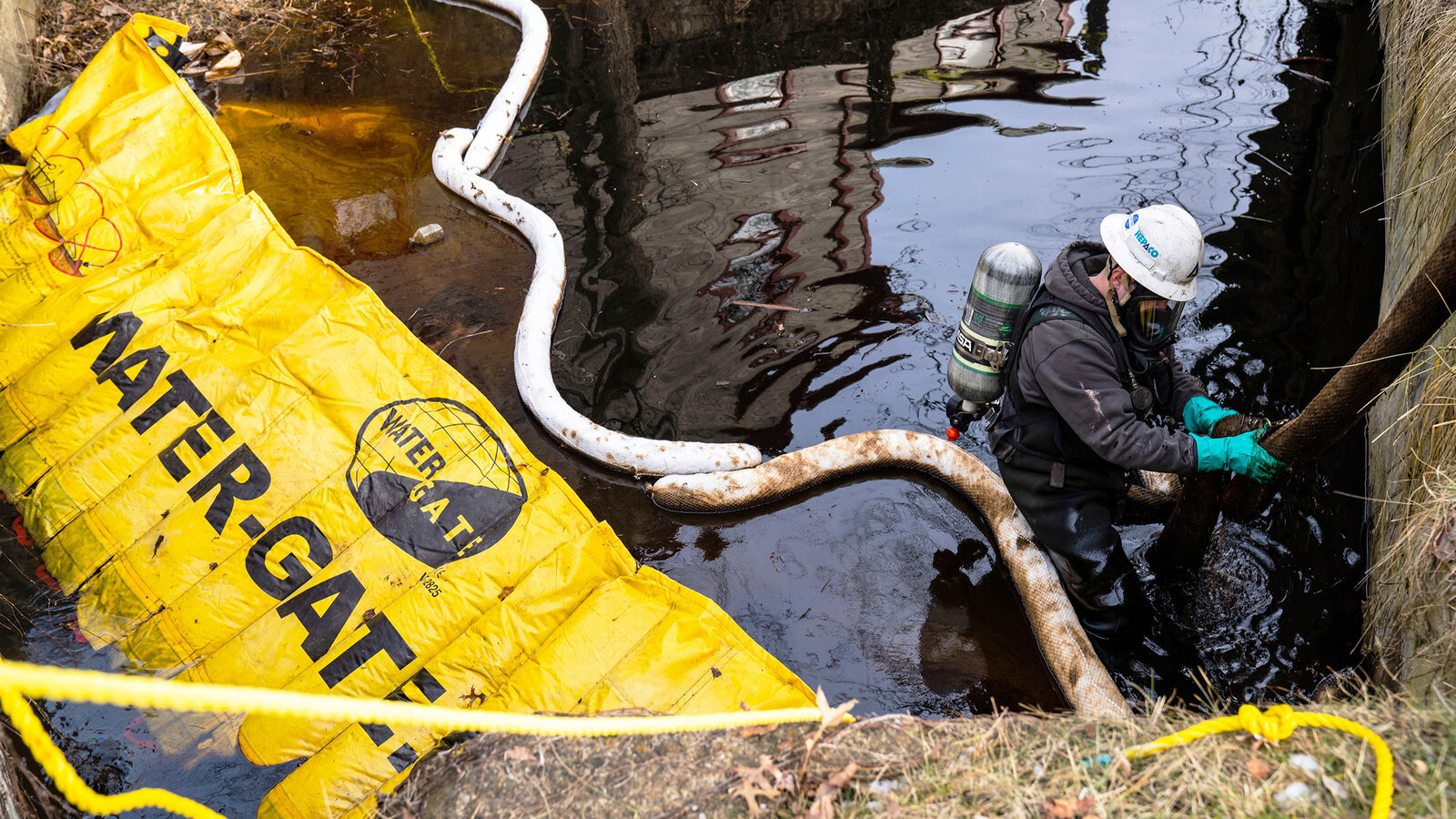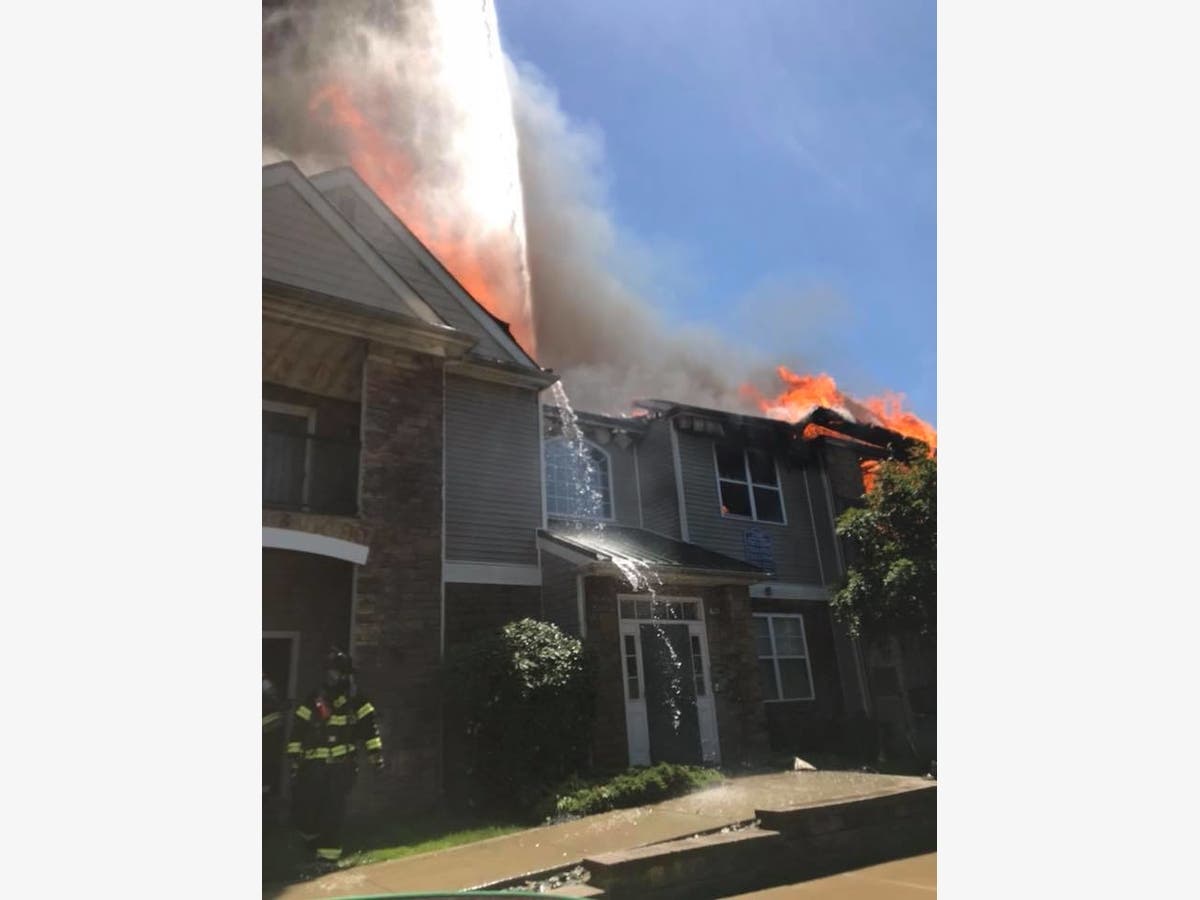Building Contamination From Ohio Train Derailment: The Extent Of Chemical Lingering

Table of Contents
Pathways of Building Contamination
The release of toxic chemicals from the derailed train created multiple pathways for building contamination, posing significant challenges for residents and property owners.
Airborne Contamination
Airborne chemicals, released in the immediate aftermath of the derailment, could have easily settled onto and infiltrated buildings. The extent of this contamination depends heavily on several factors:
- Building Materials: Porous materials like wood, drywall, and insulation are more susceptible to absorbing airborne contaminants than non-porous materials like glass or metal. Vinyl chloride, for example, can readily penetrate porous building materials.
- Ventilation Systems: HVAC (heating, ventilation, and air conditioning) systems can inadvertently spread contamination throughout a building if contaminated air is drawn in. Conversely, well-maintained systems with appropriate filtration can mitigate the spread.
- Affected Building Components: HVAC systems themselves, insulation, and even interior finishes are at risk of contamination. Cleaning and potentially replacing these components may be necessary depending on the level of contamination.
Surface Contamination
Direct contact with spilled chemicals or contaminated runoff from the derailment site caused surface contamination on buildings. This poses unique challenges depending on the affected surface:
- Chemical Persistence: Different chemicals persist for varying durations on different surfaces. Some may quickly evaporate, while others may adhere for extended periods.
- Cleaning Challenges: Remediation strategies vary widely depending on the type of surface and the chemical involved. Cleaning porous surfaces requires specialized techniques to prevent deeper penetration of contaminants.
- Long-Term Residue: Even after cleaning, some residue may remain, requiring ongoing monitoring and potentially more extensive remediation measures.
Groundwater Contamination
The potential for groundwater contamination represents a long-term threat to buildings.
- Chemical Leaching: Chemicals released into the soil can leach into the groundwater, contaminating wells and potentially affecting building foundations and basements.
- Manifestations in Buildings: Groundwater contamination might manifest as musty odors, water discoloration, or even structural damage over time.
- Long-Term Health Risks: Exposure to contaminated groundwater through drinking water or direct contact can lead to significant long-term health risks.
Assessing and Mitigating Building Contamination
Addressing building contamination requires a systematic approach involving rigorous testing and targeted remediation strategies.
Testing and Monitoring
Professional testing is crucial to ascertain the extent of building contamination. This involves several methods:
- Air Sampling: Detects airborne contaminants to determine air quality and identify the presence of hazardous substances.
- Surface Swabbing: Identifies surface contamination levels on various building materials.
- Water Analysis: Tests for the presence of contaminants in groundwater or building water supplies.
- Regulatory Compliance: All testing and remediation efforts should comply with relevant environmental regulations and reporting requirements. Working with environmental consultants ensures this compliance.
Remediation Strategies
Remediation strategies vary depending on the nature and extent of contamination:
- Cleaning and Decontamination: This may involve specialized cleaning solutions, HEPA vacuuming, and other techniques to remove surface contaminants.
- Component Replacement: Severely contaminated components, such as insulation or HVAC systems, might require replacement.
- Demolition: In extreme cases, demolition of a building may be the only viable option.
- Waste Disposal: Proper disposal of contaminated materials is crucial to prevent further environmental damage. This process should follow strict guidelines for hazardous waste disposal.
Long-Term Health Impacts and Prevention
Exposure to the chemicals released during the derailment poses serious long-term health risks.
- Potential Health Effects: Prolonged exposure to vinyl chloride, for example, is linked to increased cancer risk. Butyl acrylate can cause skin and eye irritation, and respiratory problems.
- Minimizing Future Risks: Improved safety measures in the transportation of hazardous materials, including enhanced railcar design and stricter regulations, are vital to prevent future incidents.
- Resources for Residents: Residents concerned about their health should contact local health authorities and utilize available resources for testing and support.
Conclusion
The Ohio train derailment highlights the devastating and long-lasting consequences of hazardous material releases, particularly concerning building contamination. The potential for long-term health risks associated with lingering chemicals underscores the need for thorough building contamination assessment, comprehensive remediation strategies, and proactive measures to prevent future incidents. Don't wait – take action. If you suspect building contamination, contact a qualified environmental consultant immediately to conduct a thorough building contamination assessment and implement appropriate remediation of building contamination. Protecting your health and property requires proactive steps to prevent building contamination and mitigate the long-term consequences of this devastating event. Visit your local health department or EPA website for more information and resources.

Featured Posts
-
 Blake Livelys Family Support Amidst Reported Feud With Taylor Swift And Gigi Hadid
May 22, 2025
Blake Livelys Family Support Amidst Reported Feud With Taylor Swift And Gigi Hadid
May 22, 2025 -
 Chi Zagrozhuye Ukrayini Vidmova Vid Nato Analiz Politichnikh Rizikiv
May 22, 2025
Chi Zagrozhuye Ukrayini Vidmova Vid Nato Analiz Politichnikh Rizikiv
May 22, 2025 -
 Doubt Surrounds Australian Trans Influencers Record Breaking Achievement
May 22, 2025
Doubt Surrounds Australian Trans Influencers Record Breaking Achievement
May 22, 2025 -
 Jail Term Appeal For Tory Councillors Wife Following Migrant Rant
May 22, 2025
Jail Term Appeal For Tory Councillors Wife Following Migrant Rant
May 22, 2025 -
 Abn Amro Facing Potential Fine Over Executive Bonuses
May 22, 2025
Abn Amro Facing Potential Fine Over Executive Bonuses
May 22, 2025
Latest Posts
-
 South Central Pennsylvania Under Severe Thunderstorm Watch
May 22, 2025
South Central Pennsylvania Under Severe Thunderstorm Watch
May 22, 2025 -
 Overnight Fire Engulfs Dauphin County Apartment Building
May 22, 2025
Overnight Fire Engulfs Dauphin County Apartment Building
May 22, 2025 -
 Shooting Investigation In Lancaster County Pa Details Emerge
May 22, 2025
Shooting Investigation In Lancaster County Pa Details Emerge
May 22, 2025 -
 Severe Weather Alert Thunderstorm Watch For South Central Pa
May 22, 2025
Severe Weather Alert Thunderstorm Watch For South Central Pa
May 22, 2025 -
 Dauphin County Apartment Fire Overnight Blaze Leaves Residents Displaced
May 22, 2025
Dauphin County Apartment Fire Overnight Blaze Leaves Residents Displaced
May 22, 2025
